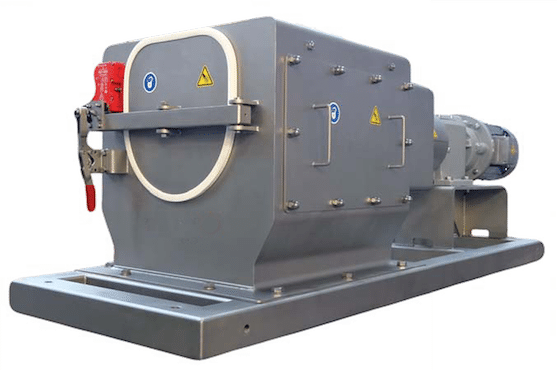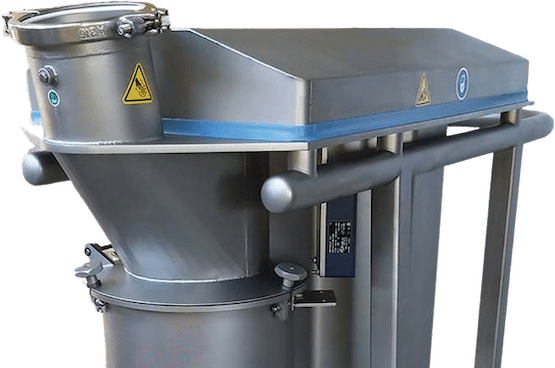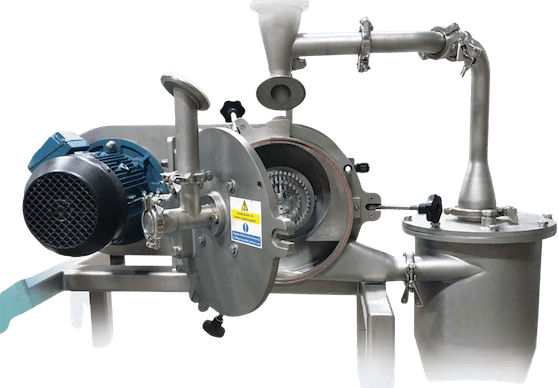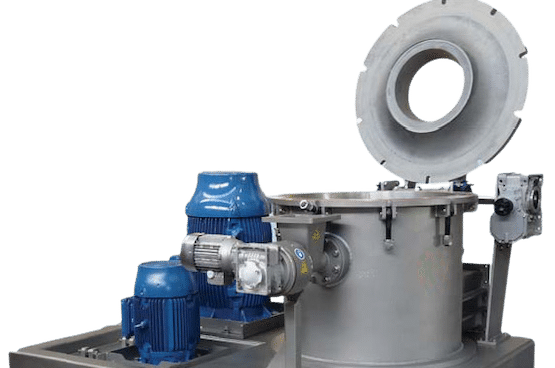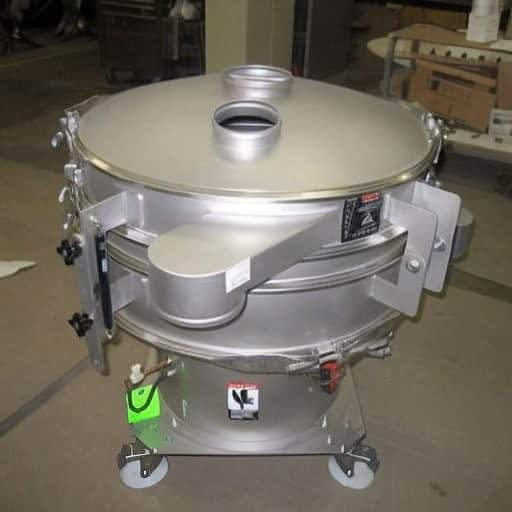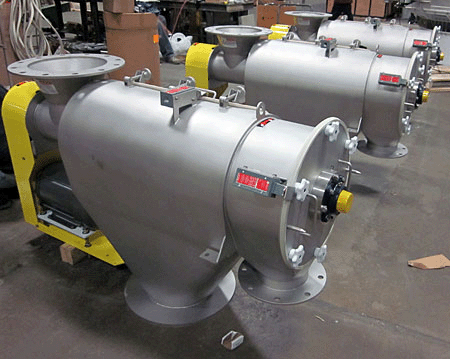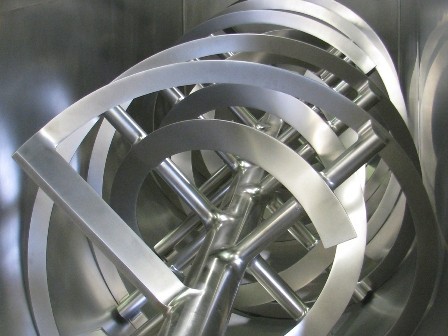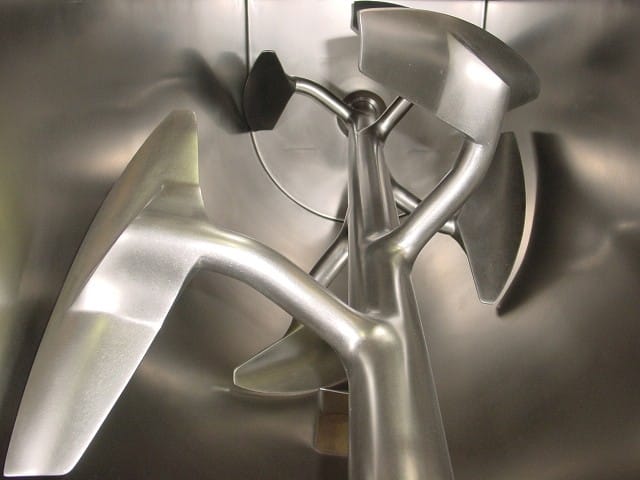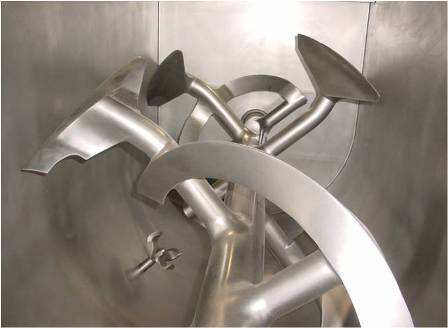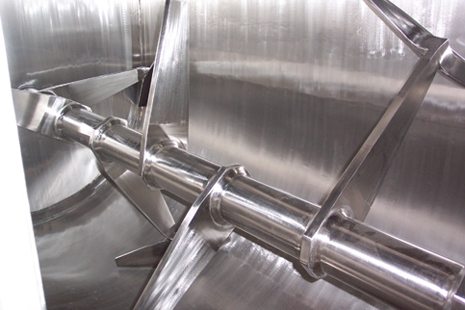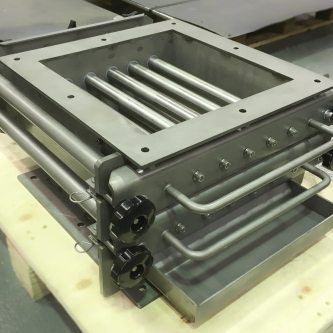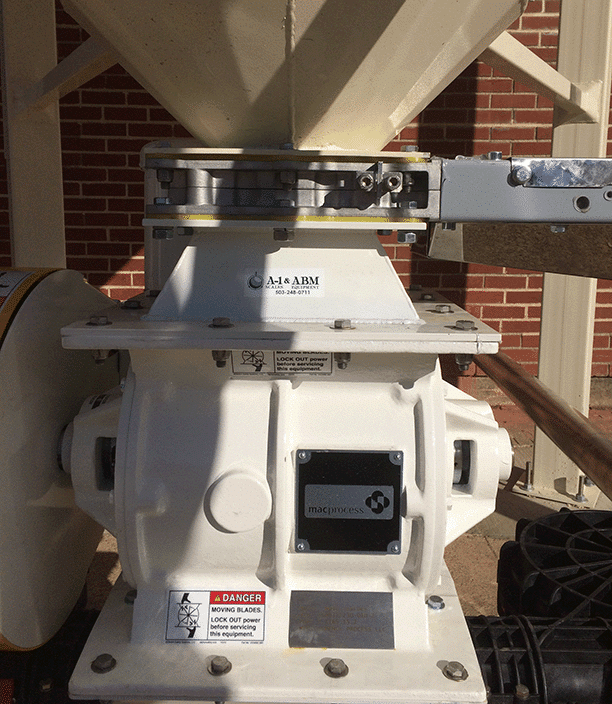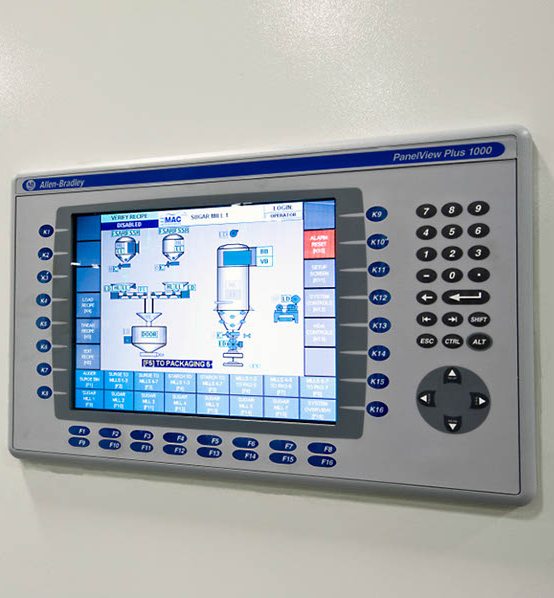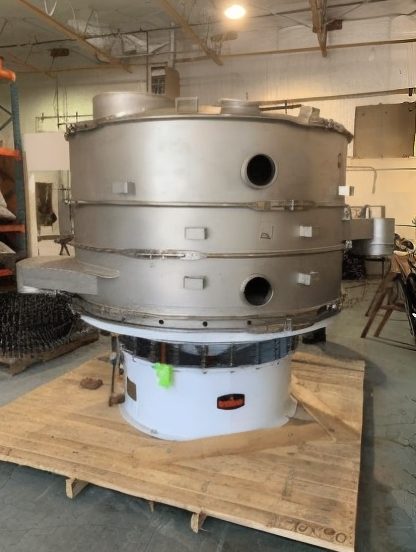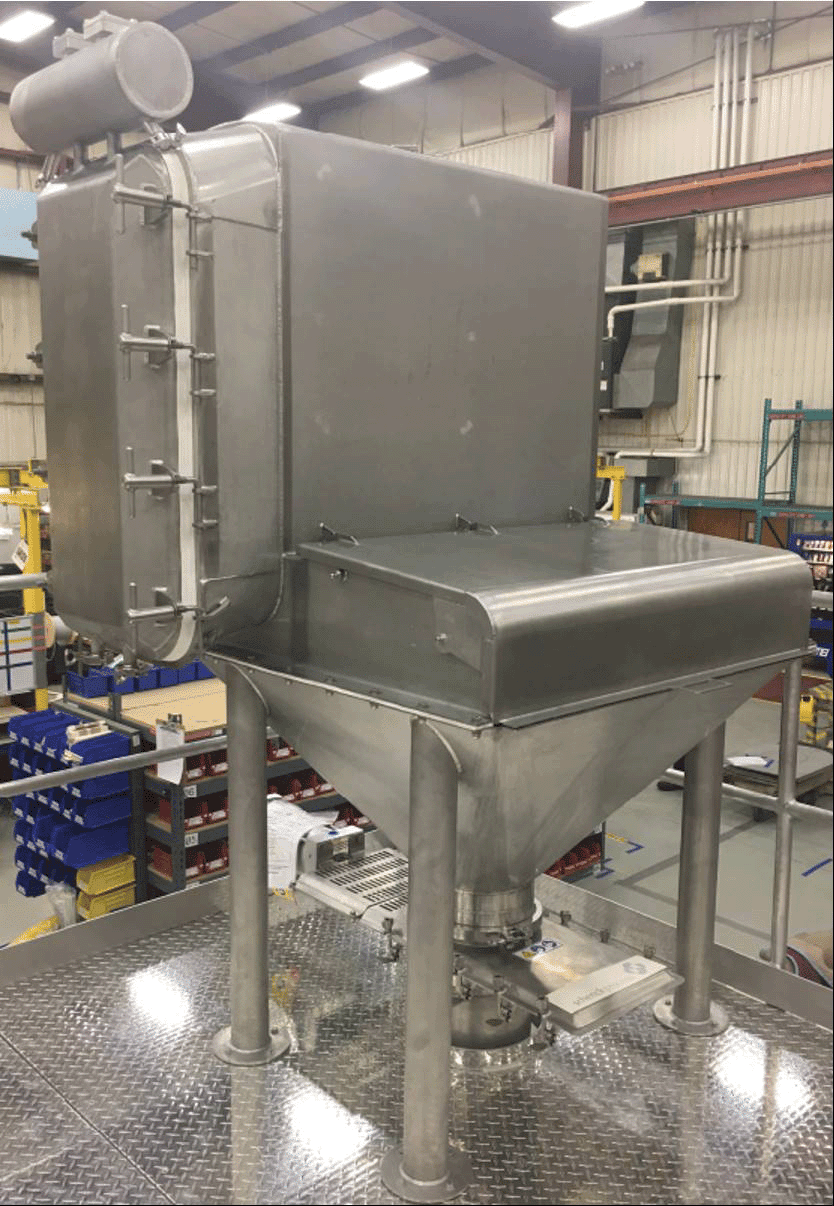Processing Equipment
Food, pharma, or industrial, there is a best method for feeding, grinding, blending, and sorting everything. We provide custom designed, fabricated, and integrated processing systems for all types of bulk dry solids, powders, and some slurries. Below you’ll find a far-from exhaustive list of popular equipment. If we seem like a fit but you don’t see the exact piece you’re looking for, fill out the form below; we can improve nearly any system.
Lump Breakers
Lump breakers use low speed, high-torque beaters to break large chunks of product down to as small as 2 mm. Ideal for soft to medium-hard aggregates, models are available for up to 90 tons/hr.
Cone Mills
Cone Mills use a spinning apparatus, varying for the application, which grinds product against a screen. They reach a wide range of grind sizes down to 250 μm and are available for labs and commercial projects alike.
Universal Mills
Universal Mills use interchangeable turbine and pin configurations to provide optimal grinds for the most flexible range of inputs and finished products possible, reaching particle sizes down to 20 μm.
Disc Mills
Disc Mills can be used for many products from minerals and ceramics to pharmaceuticals and delicate foods. Stone discs are used to maintain low temperatures and protect the nutritional value of whole foods.
Roller Mills
Most popular in brewing and distilling, roller mills pass product between two precisely-spaced cylinders to avoid creating particulates which would negatively impact quality of the end-product.
Static Sieves
Cross-flo static sieve screeners & separators are for solid/solid or liquid/solid separation. By pouring product over the custom-sized sieve gaps, fluids can be drained from solids, or small particles can be separated from large without the use of electricity. Very popular in the wastewater industry, they’re great solutions for ultra-high throughput and first-pass applications.
Vibratory Screeners
Vibroscreen sieve screeners & separators classify, de-dust, sift, or de-lump bulk dry solids or solid-laden slurries. These vibratory screeners separate product into up to 5 sizes using different sized screens which can be changed based on the application. FLO-THRU models are also available for applications with particularly stringent height parameters or high temperatures.
Centrifugal Sifters
The Centri-Sifter uses centrifugal force to propel materials against the screen of the cylindrical sifting chamber. The helical paddles used to perform this action avoid contact with the screens while breaking up soft agglomerates and ejecting over-sized and unusable particles. This solution by Kason is the ideal choice for continuous scalping of dry or moist materials, even those that tend to clump. It is also particularly effective at separating liquids from solids.
Ribbon Blenders
Ribbon blenders are one of the oldest automated mixing methodologies and use u-shaped troughs with opposing sets of helical agitators—one inner, and one outer. By forming 2 opposing cyclones within the product, they create homogeneous mixes quickly but create some heat and can degrade sensitive products.
Paddle Mixers
Paddle Blenders have U-shaped horizontal troughs and paddles which move product in opposing horizontal and vertical directions. Paddle blenders are typically used for feed and grain, non-directional slurry mixes, particulates, abrasive products, pastes, filter cakes, and fragile/friable products. They’re favored for their gentleness and ability to mix fractional batches.
Mixer/Grinders
Intended primarily for meat and meat substitutes, mixer/grinders homogenize and grind product in a single machine. The mixer combines different meats while the feeding auger grinds product further. Click here to view the various types and sizes of solutions available. Though different models use ribbons or paddles, they aren’t used for the same applications and belong in their own category.
Plow Blenders
Plow blenders are well-suited for applications requiring vacuums or high pressure. They use wedge-like plows attached to a high-speed rotor to lift the product and create a weightless effect, helping negate problems caused by differences in particle size or density. They’re adept at mixing solids to solids, liquids to solids, and solids to liquids for a wide range of applications.
ANCILLARY EQUIPMENT
In-Line Magnets
Magnets improve product safety and protect your equipment. ABM supplies and installs all solutions from small-scale screening along pharmaceutical lines to separation of ferrous and non-ferrous metals for industrial applications.
Rotary Valves
Rotary valves control or meter product flow and assist with difficult or bridging materials. They are critical for pneumatic conveyance systems.
Process Controls
Processes can be as sophisticated or as simple as needed for any application. Whether you’d like to manually portion ingredients for a single step or push a button on a tablet to take a batch all the way to completion, we deliver custom solutions with programming and operation support.
PattyMakers
From tabletop units capable of 2,200 patties/hr to commercial floor units capable of 7,800, these pattymakers from Hollymatic are the most rugged, reliable, and popular in their category.
Fluid Bed Dryers
The Vibro-Bed maximizes the exposure of a material’s surface area to air and therefore the rate at which it can be dried, cooled, or moisturized. Available in 18 to 84-inch diameters, Kason models are ideal for lab and high-volume processing alike.

